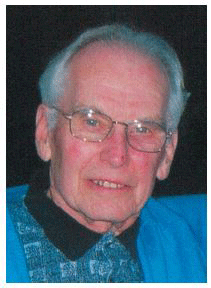Dr H. Barss Dimock, 1922–2015

Dr Dimock was born in Trail, BC, on 14 January 1922, and grew up in the small town. As a young man he played hockey and tennis and was an outstanding baseball player. Along with his brother, Bill, even as a junior he was a member of the Trail Senior Baseball Team, which won the Western Canada Championships.
Dr Dimock obtained his BSc and subsequently his MD (with first-class honors) from the University of Alberta in 1945, followed by 2 years of residency in internal medicine in Edmonton. He maintained his interest in sport at university where he was president of the University of Alberta Hockey Team. During his university years he also joined the Phi Kappa Pi fraternity.
After residency Dr Dimock joined the C.S. Williams Clinic, which had a head office in Trail and satellite offices in Rossland and Castlegar—bedroom communities of Trail where most of the male residents were employees of Cominco, a large lead-zinc smelter in Trail. Dr Dimock did general practice in both Rossland and Castlegar for a short time. Making use of the generous postgraduate time offered by the clinic, Dr Dimock completed another 2-year residency in internal medicine and obtained his certification as a specialist in 1954. He was awarded his fellowship by the Royal College in 1972 and practised internal medicine with the clinic from 1954 until 1999.
For many years the clinic had a contract with Cominco to perform medicals on new employees and interpret blood levels for employees who worked in the lead smelter. As the smelter expanded to approximately 4000 employees, Cominco’s operations expanded in British Columbia, Alaska, and the high Arctic, and Dr Dimock took an active part in expanding occupational medicine and industrial health. This occupied at least one-third of his career from 1963 to 1990. He became a Fellow of the American College of Occupational and Environmental Medicine.
In the intervening years Dr Dimock served on the Board of Directors of the BCMA/Doctors of BC and the Northwest Occupational Medicine Association. He was also chief of staff of the Trail Regional Hospital for several years.
Dr Dimock was an active skier at Red Mountain. He would say that “If you can ski Red, you can ski anywhere in the world.” And a golfer—he even got a hole-in-one in 1990! As an active Rotarian, he had 33 years of perfect attendance.
Dr Dimock served as chairman of the C.S. Williams Clinic from 1970 to 1974. He was made an honorary member of the College of Physicians and Surgeons of British Columbia in 2000.
Even after retirement he remained active in numerous civic activities. He continued to live in Trail, although he traveled extensively with his wife, Sylvia, and enjoyed many summers at their Christina Lake cottage.
Dr Dimock was predeceased by his wife of over 50 years and by one son. He is survived by two daughters, one son, one brother, and several grandchildren. Dr Dimock died of a CVA on 13 October 2015.
—J.R. Harrigan, MD
Vancouver
